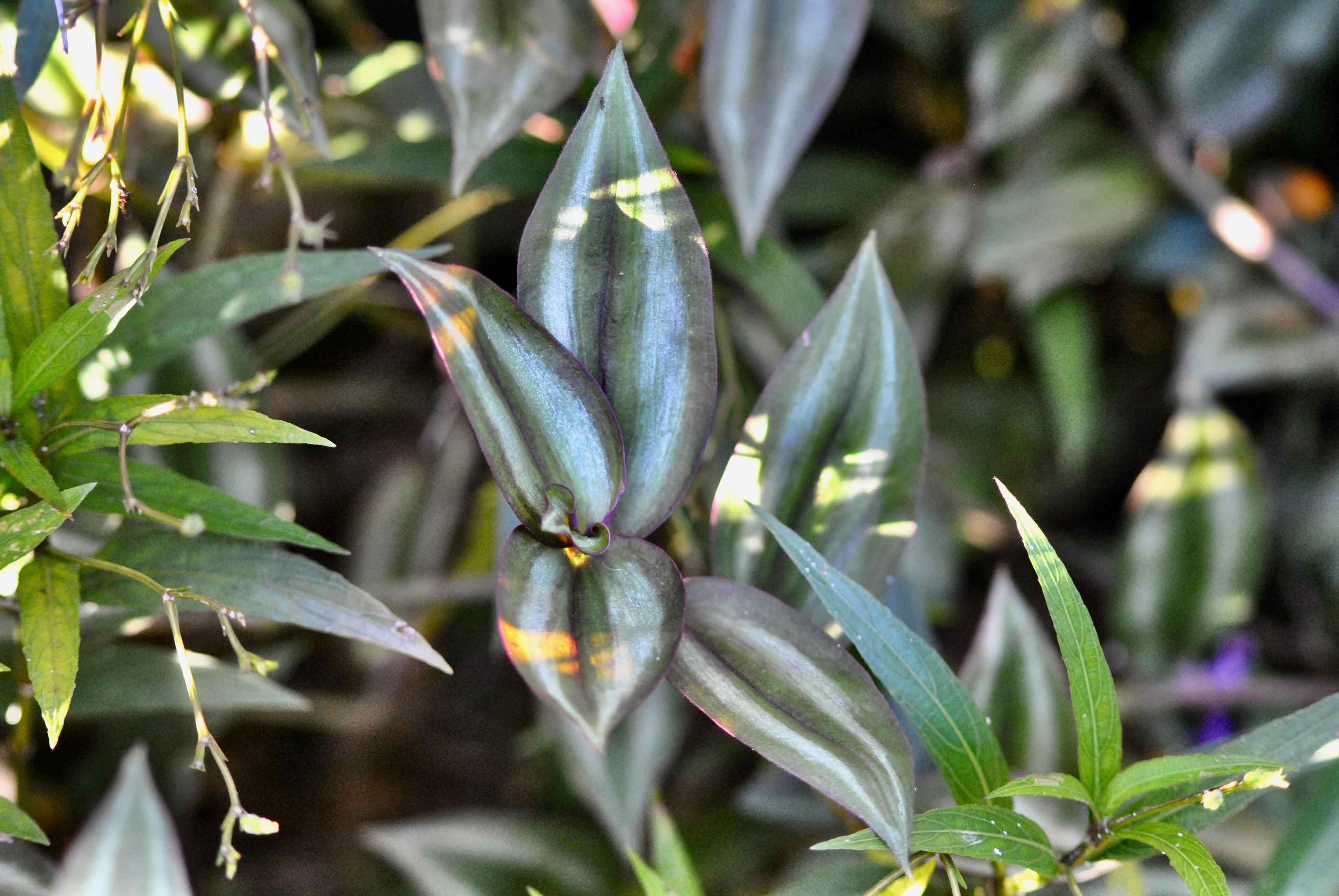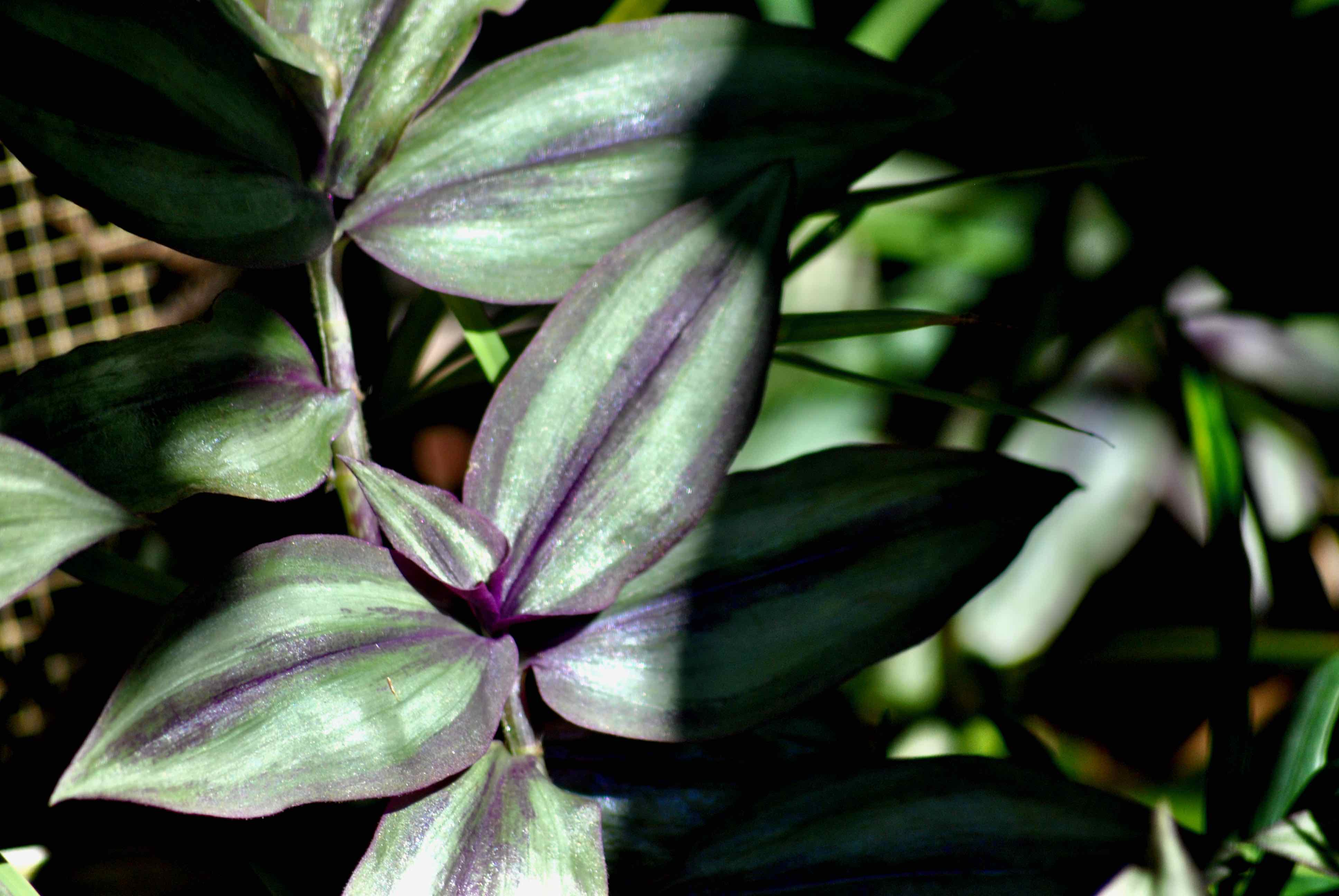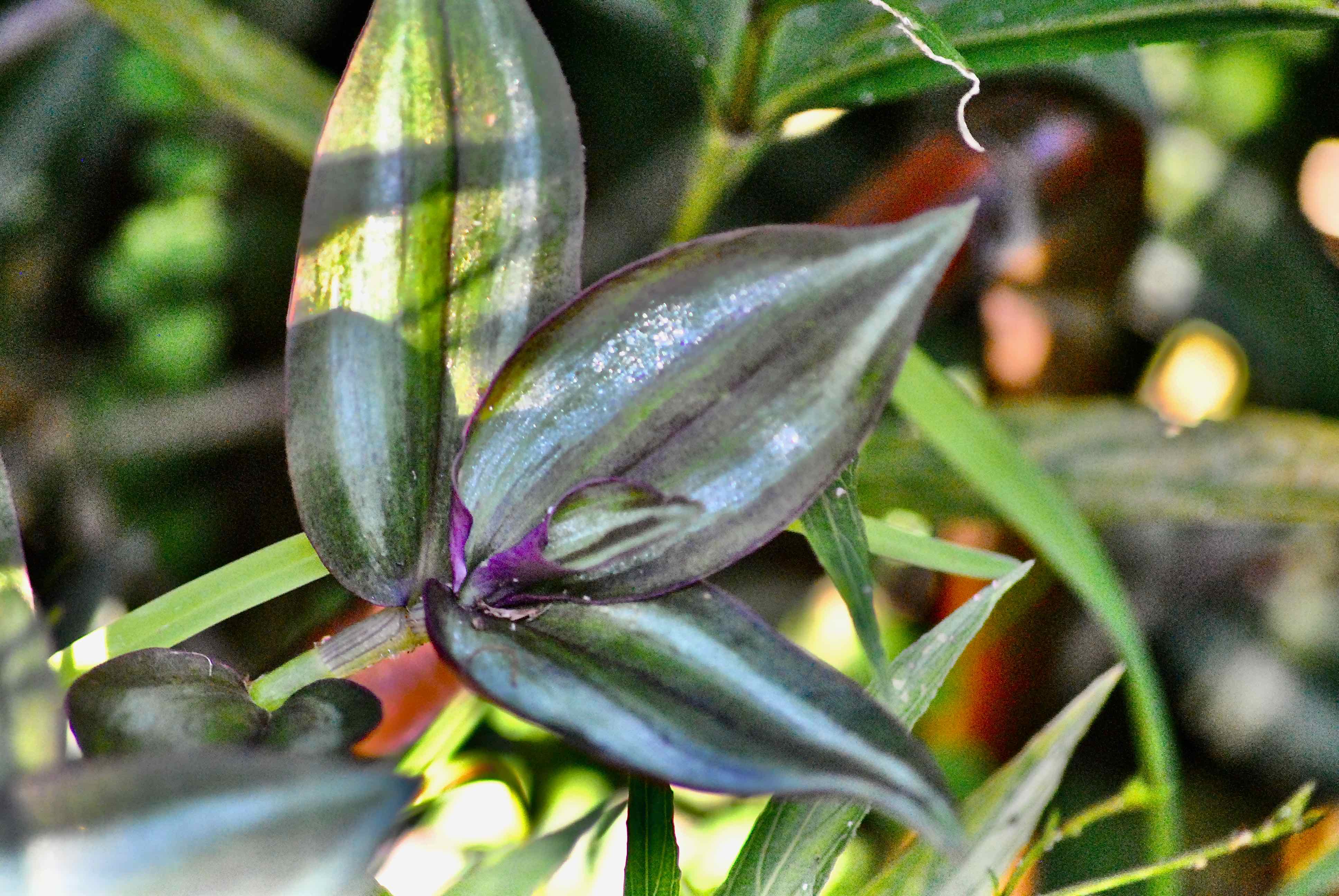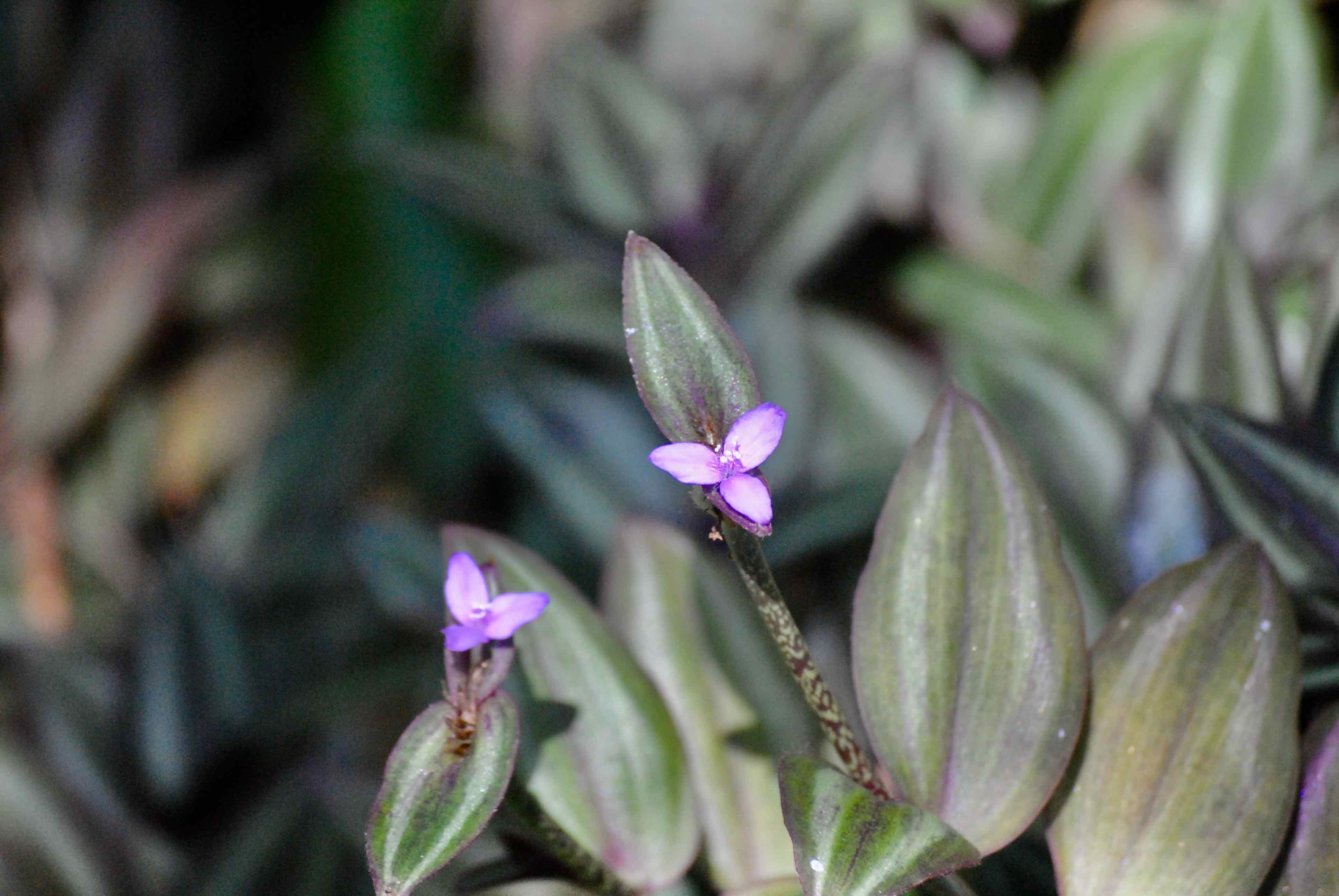
Photographed at Deerfield Island Park, Deerfield Beach, Broward County, in February 2014.
There might not be an easier plant to grow and few that are more attractive than wandering Jew, Tradescantia zebrina. Throw a piece of it on the ground and odds are it will take hold.
Which is one big reason why wandering Jew has become an invasive pest in many parts of the world. An attractive, invasive pest, but an invasive pest nonetheless.
Wandering Jew is a native of Mexico and Central America, including Belize, Honduras, Panama, Costa Rica and Guatamala. It's beauty, however, has taken it to nearly every corner of the globe as a house or garden plant. The problem is it invariably escapes cultivation and establishes itself in the wild. According to the the U.S. Department of Agriculture, it has done so in three states: Florida, Hawaii and, bizarrely, Kentucky. According to the Invasive Species Compendium, it's considered invasive in Hawaii and Kentucky but not Florida. Its range in Florida is pretty much restricted to the southern tip of the Peninsula, excluding Monroe County.
By far, the strangest thing about this plant is the name. According to one source, the name comes from several stories involving a Jewish man who had been cursed to wander the earth until eternity. Some of the stories have anti-semitic roots, some not. The name became attached to our guy apparently because of its tendency to spread, or wander. The name also has been applied to a bird, a card game and a dice game as well as two related plants.
It's also known by one of the least complimentary names we've seen given to any plant: cockroach grass. Don't ask. We don't know.
The plant itself is full of purples and reds and greens, with a tinge of silver. It creeps along the ground, rooting at nodes along the stem. The flowers are bright pink, with three petals. But wandering Jew rarely reproduces by seed. Instead, it spreads vegetatively. It is extremely brittle and pieces can break off as a human or animal, passes through a patch. And each piece potentially is a new plant. Rain water running off a site can carry pieces short distances where they can root and take hold and form new colonies. It also gets spread through improperly dumped yard and garden waste. It can form dense mats and crowd out native plants. It's considered invasive in parts of Asia, including the Philippines, Singapore and Taiwan, in the Canary Islands off the coast of Africa, in Australia, Fiji, Samoa, Tonga, New Guinea, Brazil and Ecuador, the Galapagos in particular, parts of the Caribbean, including St. Lucia, where large mats of wandering Jew have grown along the economically vital Gros Piton Trail, which is a Unesco World Heritage Site.
Other common names: inch plant, silver inch plant, striped trad, striped wandering Jew, striped wandering creeper, wandering zebringa, zebra plant and creeping Jenny. Other spellings include inchplant, inch-plant and wandering-jew. It's a member of Commelinaceae, the day flower family.
Click on photo for larger image
U.S. Department of Agriculture Distribution Maps
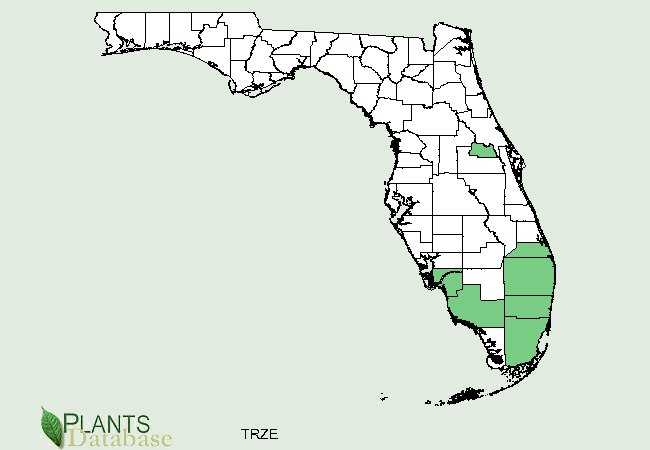

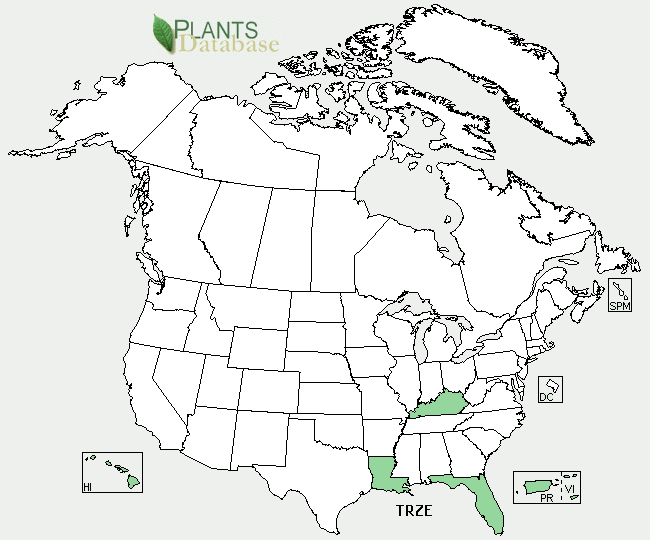
Links for Wandering Jew

